-
 Ever Wondered How to Make Paneer at Home? Here is the Complete Guide to Take Out Soft and Creamy Paneer from Milk at Home (2021)
Ever Wondered How to Make Paneer at Home? Here is the Complete Guide to Take Out Soft and Creamy Paneer from Milk at Home (2021)
-
 Want More Tantalizing Breakfast Ideas? Here are 6 Scrumptious Egg Recipes for Breakfast That Will Make You Want to Eat Eggs All Day (2020)
Want More Tantalizing Breakfast Ideas? Here are 6 Scrumptious Egg Recipes for Breakfast That Will Make You Want to Eat Eggs All Day (2020)
-
 Planning to Visit India's Silicon Valley? Fun Things to Do in Bangalore to Get the True Flavour of this Happening City (2020)
Planning to Visit India's Silicon Valley? Fun Things to Do in Bangalore to Get the True Flavour of this Happening City (2020)
The Origin of Biryani and the Difference between Biryani and Veg Biryani
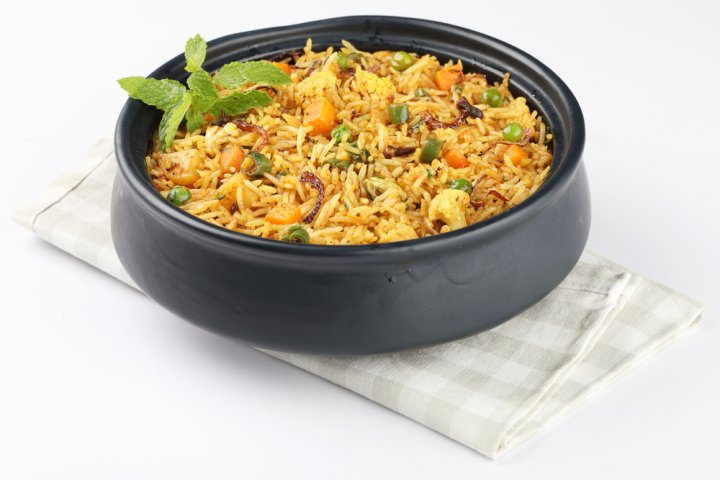
Someone once told a foodie, "Close your eyes and you'll see who you love the most", and then asked what do you see? "Biryani", the foodie replied. Biryani is not just a food, it’s an emotion and people fall in love with this special dish again and again. Biryani comes from a Persian word "Birian" meaning "fried before cooking". People have been eating this delicious dish for ages and some have tried to figure out its origin. There are many stories behind how biryani came into being. It is said that it originated from Persia and was brought to India by the Mughals. Another story says that Mumtaz Mahal, wife of Shah Jahan visited the army barracks and observed that the soldiers looked malnourished. She asked the cooks to provide them with nourishing food and the chefs made a dish with rice and meat with tons of spices cooked on wooden logs.
When people talk about biryani they usually refer to a meal cooked with rice and meat and non-vegetarians are quite defensive about it but today we will show you that Biryani is not just a non-vegetarian dish. You can make a perfect veg biryani and challenge the non-vegetarians to find a flaw in it. Another misconception in some people's mind is that veg biryani is the same as pulao. Here we will show you three major differences between the two:
- When making a pulao, the vegetables and the rice are cooked together in the same pot, but in a biryani you cook the vegetables and rice separately in different pots. The rice in biryani is semi-cooked and then layered with spices and vegetables on a low flame which is called 'dum'.
- A pulao does not have the range and variety of spices like the biryani.
- A major difference is the time it takes to prepare the two. Biryani takes a lot more time and patience, not to mention the love you put in making it, whereas a pulao can be prepared in no time.
So, now you can easily confront a non-vegetarian and tell him that it is not the meat that makes the difference, it is the technique.
Yummy Vegetarian Biryani Recipe
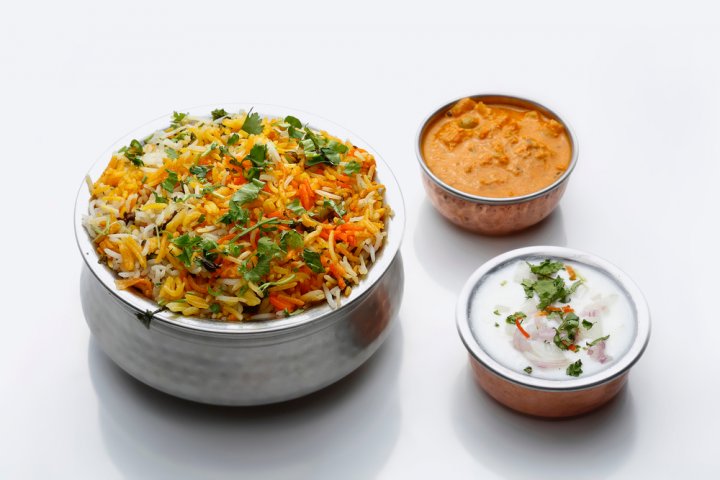
Here are 2 super tasty vegetable biryani recipes you can make at home and invite your non-vegetarian friends for a feast:
Restaurant Style Vegetable Biryani
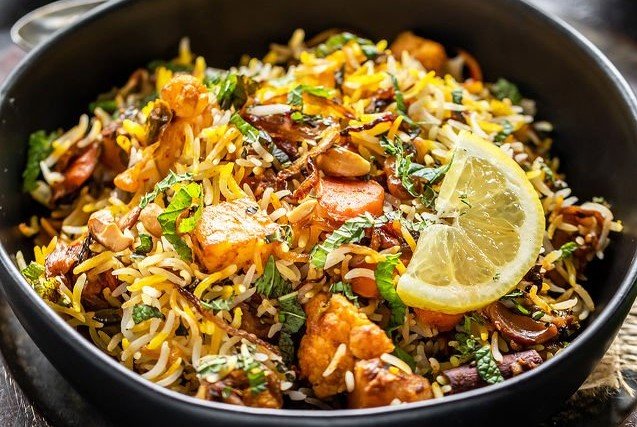
You make a pulao when you want an easy dinner but you make a biryani when you want to have something special on a special occasion. This restaurant style vegetable biryani is not an easy recipe but it’s worth your time and effort.
The basic ingredients in making a biryani are:
- Rice: It is recommended to use long-grain basmati rice for biryani, to get those long slender pieces melt in your mouth.
- Vegetables: Look for all or any vegetable you like, e.g. potato, cauliflower, beans, carrots, mushrooms or paneer. You can use whichever vegetables you want as long as they are fresh.
- Spices: You will need whole and ground spices for a perfect biryani. Common spices are cardamom, peppercorns, cumin, saffron, garam masala, rose water or kewra water for that special aroma in the biryani.
- Herbs and Nuts: Don't forget the importance of fresh herbs and nuts. You can use mint, cilantro, cashews for garnishing and the most favourite is the caramelised onions sprinkled over right before serving.
Here are some great tips to make a perfect restaurant style veg biryani:
- Always use fresh ingredients, e.g. don't go for the ginger and garlic paste from the store, mince your own paste and see the difference.
- Remember to pan-fry the vegetable before cooking to add texture.
- Always drizzle ghee on top of the biryani before serving.
Let us start with the recipe now:
Ingredients:
- 1 cup basmati rice (200 gm), soaked in 3 cups (24 oz) water for 30 minutes
- 6 whole green cardamom divided
- 4 cloves divided
- 1 tsp salt divided
- 1½ tbsp + 1 tsp ghee divided
- 2 medium red onion thinly sliced, divided
- 2 tbsp broken cashews
- 1 small potato cubed
- ½ cup cauliflower medium-sized florets
- 1 medium carrot cut diagonally
- 5-6 green beans cut diagonally
- 2 tbsp milk (30 ml)
- Saffron strands generous pinch
- 1 inch ginger crushed
- 4-5 large garlic cloves crushed
- 2 green chilies crushed
- 1½ tbsp oil (22 ml)
- ½ tsp cumin seeds (you can use shahi jeera also)
- 1 inch cinnamon stick
- 1 bay leaf
- 3 whole black peppercorns
- ⅓ cup plain yogurt whisked, at room temperature, can add ¼ tsp corn starch and whisk to prevent curdling
- 1½ tsp biryani masala or use 1 tsp garam masala
- ½ tsp Kashmiri red chili powder or use regular chili powder for heat
- ¼ cup water
- 2 tbsp chopped cilantro
- 2 tbsp chopped mint
- 1½ tsp rose water or kewra water
Method:
- Soak 3 cups of rice in water for about 30 minutes, drain and keep aside.
- Take a large pot and fill it with water, add 3 green cardamom, 2 cloves and ¾ tsp salt and boil the water.
- Put the rice in it and stir.
- Cook it without the lid on full heat till it is about 70% cooked. It should take about 7-8 minutes.
- Drain the rice and add 1 tsp of ghee to it. Keep it aside.
- Take a pan and heat 1½ tbsp ghee on medium heat.
- Cook 1 sliced onion till it turns golden brown and caramelised. Take it out on a plate and put it aside.
- In the same pan add cashews and cook till golden brown. Set them aside in a plate.
- In the same pan put potato and cook till brown. Keep them aside on a plate.
- Now cook cauliflower, beans and carrots in the same pan for 2-3 minutes and keep them on a plate.
- Now heat 2 tbsp milk in a pan and add saffron strands to it. Leave it for 10 minutes and keep it aside.
- Crush ginger, garlic and chili in mortar and pestle and keep it aside.
- Now take a pot and heat 1½ tbsp oil on medium heat and add cumin seeds, cinnamon stick, bay leaf, peppercorns, cardamom and cloves to it. Let them sizzle and add sliced onions and ¼ tsp salt to it.
- Cook till the onion turns brown and add ginger, garlic and chili paste to it and cook for 2 minutes.
- Now remove the pan and whisk in the yogurt, whisking it continuously.
- Put the pan back on fire and add vegetables and toss them.
- Now add the biryani masala and Kashmiri red chili powder to it.
- Add ¼ cup water and cook for 6-7 minutes, don't overcook the vegetables.
- Remove from heat.
- Take a heavy bottom pan and grease the bottom with ghee.
- Put a layer of rice; add ½ of the fried onions, ½ of fried cashews, ½ of cilantro and mint. Add ½ tsp of rose water to it.
- Now add all the vegetables to it.
- Add another layer of the remaining rice on top of the vegetables and rest of the onions, etc.
- Put in the saffron milk and 1 tsp of rose water to it.
- Finish it up with 1 tsp of ghee and sprinkle some biryani masala over it. Make sure the last layer is of rice always.
- Cover the pan with aluminium foil and put a lid on.
- Heat a tawa or a flat pan on medium heat, lower the flame and put the biryani pot on top of it. Cook for 30 minutes on low heat.
- Remove from the heat and mix the rice and vegetables carefully. Serve it with raita.
Vegetable Biryani Recipe in a Cooker
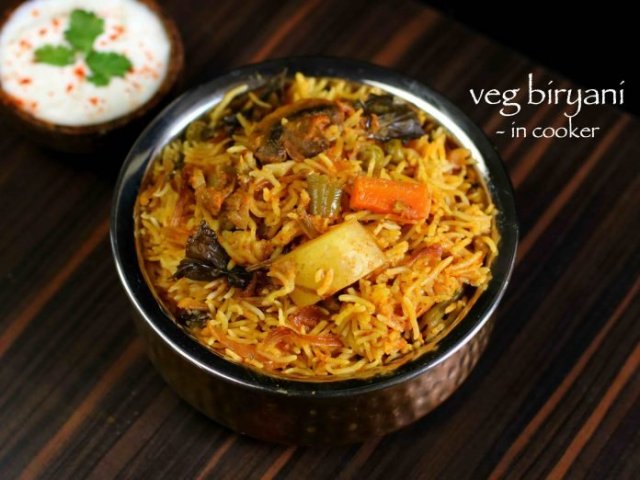
A perfect biryani is made in a large aluminium pot but if you want you can make it in a pressure cooker as well. Follow the recipe given below to make delicious vegetable biryani in your pressure cooker for dinner:
Ingredients:
- 3 tbsp ghee/clarified butter
- 2 bay leaf/tej patta
- 2 inch cinnamon stick/dalchini
- 1 star anise
- 5 cloves/lavang
- 4 cardamom/elachi
- ½ tsp pepper
- ½ tsp cumin seeds/jeera
- 1 medium onion, finely chopped
- 1 tsp ginger-garlic paste
- 5 beans, chopped
- 10 florets gobi/cauliflower
- ¼ cup peas/mattar
- 1 carrot, chopped
- 1 potato, cubed
- 3 mushrooms, sliced
- 1 cup curd/yogurt
- ½ tsp turmeric/haldi
- 1 tsp Kashmiri chilli powder/lal mirch powder
- ¼ tsp cumin powder/jeera powder
- 2 tsp biryani masala
- Salt to taste
- 6 tbsp coriander leaves, finely chopped
- 20 mint/pudina leaves, roughly chopped
- 6 tbsp onions, fried
- 1½ cups basmati rice, soaked 30 minutes
- 2 tbsp saffron water
- 2 cups water
Method:
- Take a large pressure cooker, heat ghee in it and sauté your spices.
- Add onions, ginger and garlic paste and sauté it as well.
- Now, add mixed vegetables of your choice and sauté them well.
- Add curd to it and stir it well on low flame.
- Next add in coriander and mint leaves and also the fried onions.
- Take pre-soaked basmati rice and spread it over it.
- Sprinkle biryani masala and salt in it.
- Now add saffron water and ghee to it.
- Put in water, close the lid and simmer it for 25 minutes.
- Serve hot biryani with raita and chutney.
Videos to Learn Making Veg Biryani Like a Pro
YouTube is a great platform which has provided you a way to learn whatever you want in a few minutes. Cookery channels are one of the most popular channels on YouTube and there are tons of them which teach different ways of making vegetable biryani. We have shortlisted 3 videos which are quite famous and have great reviews. You can watch and learn to make great veg biryani through them:
- You can learn to make great tasting restaurant style vegetable biryani from a very famous chef, Varun Inamdar through the channel Rajshri Food. This is a great channel which teaches you tons of different dishes as well. You can check it out on Rajshri Foods.
- Another video you can watch and learn making vegetable biryani is through Yummy Indian Kitchen. This video teaches making biryani in a pressure cooker. You can view it on Yummy India Kitchen.
- If you search for recipes on YouTube you must know bharatzkitchen. This is a very popular chef who teaches great tasting dishes in simple manner. You can learn to make soya veg biryani Hyderabadi on Bharatzkitchen.
Tips on Making the Perfect Biryani
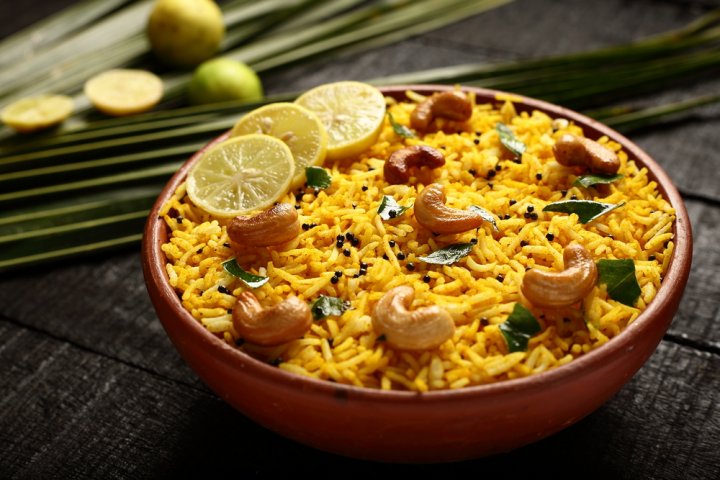
Here are some tips that will help you in making the perfect vegetable biryani at home and be proud:
- The quality and type of ingredients you use make a lot of difference in a biryani. Rice is the main ingredient therefore it is important to use the best one for it. The recommended rice is the basmati rice which has long and slender grains and makes your biryani extremely delicious and tempting.
- Always soak the rice for 30 minutes before preparing biryani. It softens the rice and makes it fluffy.
- You may be tempted to go the easy way and choose to use garam masala or any of the special biryani masalas. While they do the job, using whole spices like cloves and cardamoms with the rice is the best way to get that wonderful aroma and flavours.
- Avoid over-cooking, the rice you'll get will be a sticky biryani which ruins the taste and appearance of your biryani.
- Always use saffron to get the perfect colour in your biryani.
- A biryani without the sweet and caramelised onion is incomplete. Use it for garnish and make a professional looking biryani at home.
-
 Ever Wondered How to Make Paneer at Home? Here is the Complete Guide to Take Out Soft and Creamy Paneer from Milk at Home (2021)
Ever Wondered How to Make Paneer at Home? Here is the Complete Guide to Take Out Soft and Creamy Paneer from Milk at Home (2021)
-
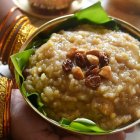 Want to Pamper Your Taste-Buds this Pongal? Here are Mouth-Watering Pongal Recipes You can't Miss in 2019
Want to Pamper Your Taste-Buds this Pongal? Here are Mouth-Watering Pongal Recipes You can't Miss in 2019
-
 Breakfast is the Most Important Meal of the Day: 10 Nutritious and Easy-to-Make Indian Breakfast Recipes to Start Your Day (2019)
Breakfast is the Most Important Meal of the Day: 10 Nutritious and Easy-to-Make Indian Breakfast Recipes to Start Your Day (2019)
-
 Can't Figure Out the Best Biryani Recipes to Fulfil Your Appetite(2020)? Fret Not, Read on to Find One You Will Definitely Want to Try Right Away!
Can't Figure Out the Best Biryani Recipes to Fulfil Your Appetite(2020)? Fret Not, Read on to Find One You Will Definitely Want to Try Right Away!
-
 Look Beyond Butter Chicken and Try Something New! Our Pick of the Top 6 Indian Chicken Recipes to Try in 2019
Look Beyond Butter Chicken and Try Something New! Our Pick of the Top 6 Indian Chicken Recipes to Try in 2019
Veg Biryani – A Gourmet's Delight
For vegetarians, veg biryani is something every foody loves. It is one of the most popular vegetarian dishes which you will see everywhere – in weddings, birthdays, get-togethers, social functions, etc. We hope this BP Guide would have convinced you that preparing veg biryani at home is not such a difficult task and you could definitely try out either of the 2 recipes given above for your forthcoming celebration. Stay connected with us for more such engaging content.

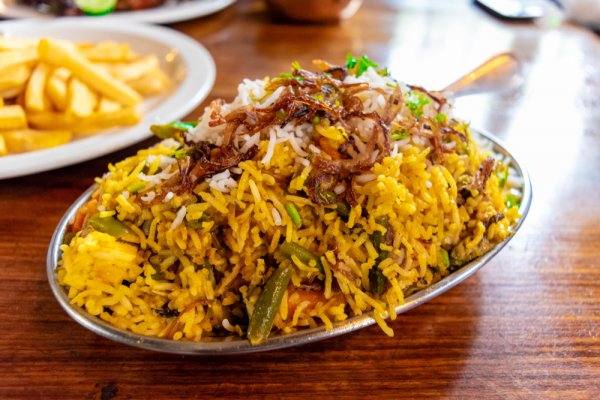
 Highlight the Best Facets of Your Incomparable Beauty: Discover the Best Face Highlighter Currently Available in India and Everything You Need to Know About Using Face Highlighters for Maximum Effect (2023)
Highlight the Best Facets of Your Incomparable Beauty: Discover the Best Face Highlighter Currently Available in India and Everything You Need to Know About Using Face Highlighters for Maximum Effect (2023)
 Forget the Blemishes and Get that Picture Perfect Flawless Radiance on Your Face: Check out the Best Foundations for Oily Skin Currently Available in India and Everything You Need to Know About Makeup Foundations (2023)
Forget the Blemishes and Get that Picture Perfect Flawless Radiance on Your Face: Check out the Best Foundations for Oily Skin Currently Available in India and Everything You Need to Know About Makeup Foundations (2023)
 Make Your Presence Felt Wherever You Go: Discover the Best Perfumes Under 2000 for Both Men and Women to Announce Your Arrival and Make Any Occasion Memorable (2023)
Make Your Presence Felt Wherever You Go: Discover the Best Perfumes Under 2000 for Both Men and Women to Announce Your Arrival and Make Any Occasion Memorable (2023)
 Protect Your Oily Skin from the Harmful Rays of the Sun: Discover the Best Gel Based Sunscreens for Oily Skin and Everything You Need to Know Before Buying One (2023)
Protect Your Oily Skin from the Harmful Rays of the Sun: Discover the Best Gel Based Sunscreens for Oily Skin and Everything You Need to Know Before Buying One (2023)
 Minor Blemishes and Wrinkles Affecting Your Confidence? Check out the Best BB Creams to Conceal Your Worries and Nourish Your Skin to Restore the Healthy, Radiant and Glowing Complexion Back Again (2023)
Minor Blemishes and Wrinkles Affecting Your Confidence? Check out the Best BB Creams to Conceal Your Worries and Nourish Your Skin to Restore the Healthy, Radiant and Glowing Complexion Back Again (2023)
